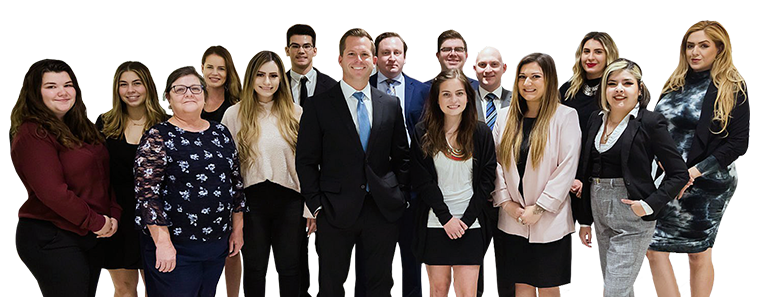Social Security disability (SSD) benefits can be a godsend for people unable to work because of their disability. And SSDs are often the only type of benefit available to people who can’t work, so it’s more than a convenience; it’s a lifesaver. But as with any government program, the Social Security Administration (SSA) has rules and restrictions, and it’s valuable to understand how the program works and what won’t be accepted before applying.
The first thing to know is that no, your disability doesn’t have to be permanent to receive benefits. The SSA will provide benefits to applicants who meet the criteria, and those benefits usually continue until the person can regularly work again. The agency has rules called work incentives that help people recover and make the return to work. But that doesn’t mean a short-term disability will qualify. For more information about the criteria to qualify, keep reading.
What Types of Disabilities Are Eligible for SSD Benefits?
There are several conditions that could qualify for SSD benefits, according to the SSA. These conditions are specific to adults. Note that the examples represent only a few types of disabilities within each category.
- Musculoskeletal disorders. This can include things like paralysis, curvature of the spine, and arthritis.
- Special senses and speech. This can include blindness or other visual issues, deafness, and speech issues.
- Respiratory disorders. This can include things such as emphysema, asthma, chronic obstructive pulmonary disease, or cystic fibrosis.
- Cardiovascular system. This can broadly include many conditions that affect the proper functioning of the heart and/or the circulatory system.
- Digestive system. Digestive issues may include inflammatory bowel disease, malnutrition, and gastrointestinal bleeding.
- Genitourinary disorders. This category includes conditions that lead to chronic kidney disease.
- Hematological disorders. Hematological issues include anemias, thrombosis, lymphoma, and myeloma.
- Skin disorders. This includes conditions such as ichthyosis, chronic skin infections, and genetic photosensitivity disorders.
- Endocrine disorders. Endocrine disorders are conditions that cause a hormonal imbalance in the body.
- Congenital disorders affecting multiple body systems. This category includes some types of Down syndrome and other congenital disorders.
- Neurological disorders. Epilepsy, amyotrophic lateral sclerosis, and comas are all neurological disorders.
- Mental disorders. This can include schizophrenia, anxiety and obsessive-compulsive behaviors, autism, eating disorders, and trauma-related conditions.
- Cancer. Many types of cancer are included, except certain cancers associated with HIV.
- Immune system disorders. This category includes a number of immune system disorders that cause dysfunction in some part of the immune system.

If someone’s medical condition isn’t on the SSA’s guidelines, that doesn’t mean it doesn’t qualify for SSD benefits. However, it could take additional effort and evidence to convince the SSA that the person should be granted the benefits.
What Are Some of the SSA’s Requirements for Disability Benefits?
First, SSDs are only available to people who have worked in jobs covered by Social Security and have disabilities in the categories listed above. They must also have worked long enough and recently enough to receive benefits. The SSA bases work credits on the total yearly wages or income for each person, for up to four credits per year. How much is needed to earn a work credit changes annually. However, usually a person would need 40 credits to earn benefits, and half of those have to be earned in the 10-year period ending with the disability.

The SSA can work with people who are not permanently disabled. That said, that doesn’t mean they’ll cover partial disability or short-term disability. There are three criteria that determine this part of the eligibility:
- The applicant can’t work and earn income or wages because of the medical condition.
- They can’t do work they previously did, nor can they adjust to other work because of the medical condition. Note that this means that someone who can no longer perform construction work because of a medical condition may not be eligible for benefits if they’re able to take another type of work (for example, a desk job).
- The condition has lasted or is expected to last at least one year or result in death.
How Can I Prove My Medical Condition Qualifies for SSD Benefits?
The SSA will simply take your word for it that you have a medical condition that makes you unable to work. They may not take the word of your personal physician either, especially regarding that inability to work. You may be required to see an independent physician for a separate examination.

The best evidence is medical tests, which include scans such as MRIs and CAT scans, X-rays, and blood tests. An independent physical or occupational therapist, or psychiatrist or psychologist, may also be able to attest to the inability of the applicant to function for work.
What Happens if My Application for SSD Benefits Is Declined?
If you believe you’ve met the SSA’s criteria for SSD benefits, but you’ve been rejected, that’s not necessarily the final answer. The SSA occasionally denies applications from people who seem to qualify. There is a process for appeals. If it hasn’t already occurred, this is an excellent point to bring in a disability and Social Security attorney who has an understanding of what can go wrong with a claim and what opportunities there might be to appeal the decline successfully.
These Tempe, AZ Disability Attorneys Can Help Filing or Appealing SSD Disability Claims
Filing disability claims with Social Security is a complicated process that benefits from working with a knowledgeable attorney. Contact us at 866-670-2689 to set up an initial case evaluation based on our extensive experience working with disability claims and appeals.














